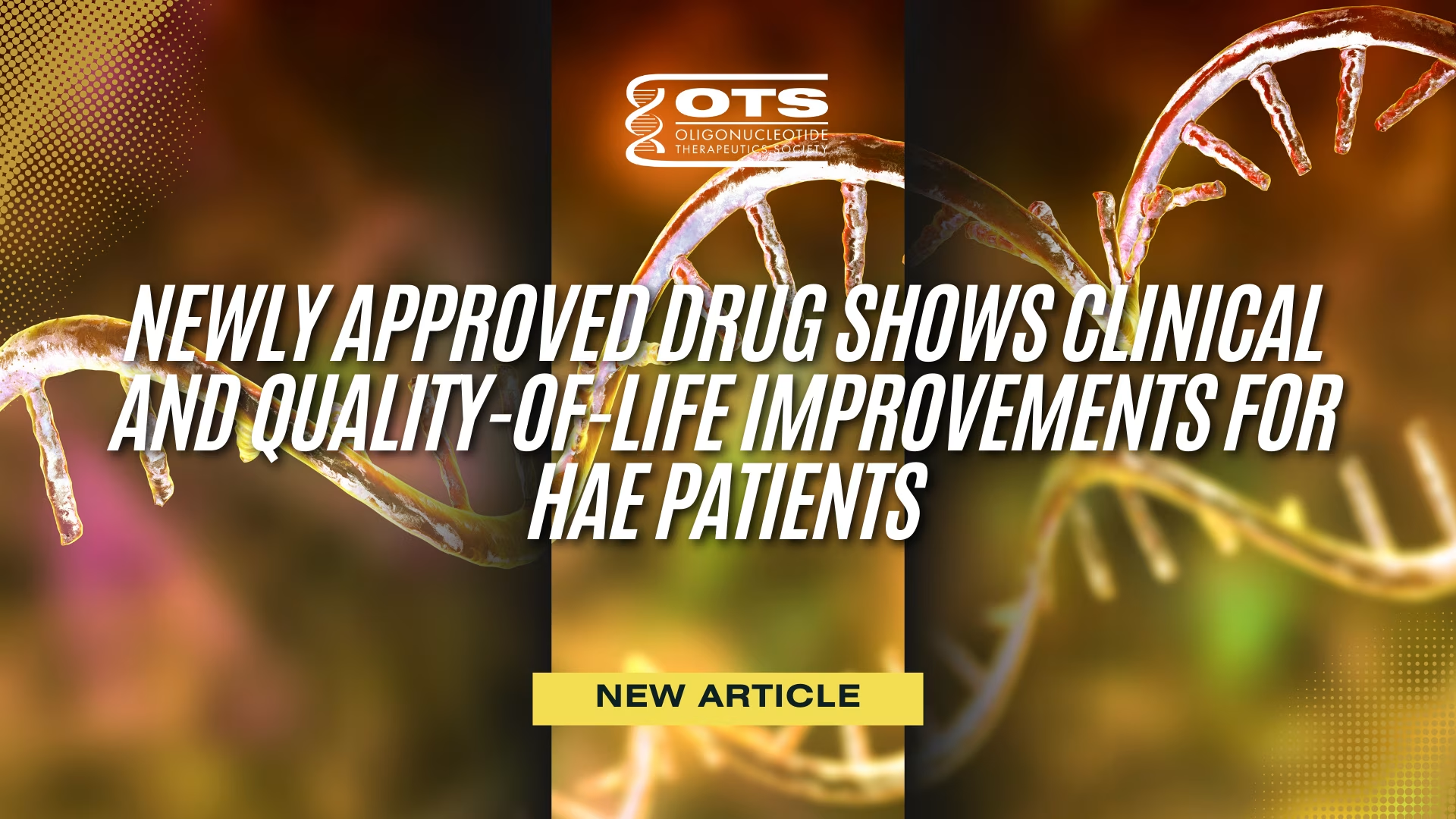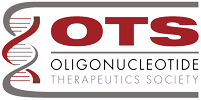Newly Approved Drug Shows Clinical and Quality-of-Life Improvements for HAE Patients

Emily Wheeler was 19 when she noticed a gradual swelling in her left foot. Believing it was an allergic reaction, she went to her doctor, who told her it was gout and gave her several pills. An hour later, she started vomiting uncontrollably and had excruciating abdominal pain. She went to the hospital, where they stopped her vomiting, and the pain and swelling went down after several hours. Home the next day and feeling better, Emily later took a shower and noticed that her usually flat stomach had expanded to the point that it looked as if she were six months pregnant, causing her intense pain.
It took two years for Emily to finally be diagnosed with Hereditary Angioedema (HAE), a rare genetic disorder that causes unpredictable, frequent, and potentially life-threatening swelling episodes. These painful attacks, which can affect areas such as the limbs, face, throat, and abdomen, are most commonly caused by a deficiency or dysfunction of the C1-inhibitor (C1-INH) protein, leading to excessive production of bradykinin. The bradykinin peptide overproduction then causes vasodilation and swelling during an attack, which can be life-threatening if it occurs in the throat. While it is a genetic disease, one in four cases is caused by a spontaneous change in the genetic code, absent of any family history.
HAE affects approximately 1 in 50,000 people and significantly impacts patients’ quality of life and mental health due to the unpredictability and severity of the attacks. After being diagnosed, Emily says her attacks got worse because she had an etonogestrel birth control implant put in. Now the painful swelling wasn’t twice a month but daily. At one point, she was in the Emergency department every second day. Her social life was nonexistent, and she had to withdraw from her nursing degree for a semester because of how uncontrollable the attacks were.
Current long-term prophylactic (LTP) FDA-approved treatments for HAE include lanadelumab, berotralstat, sebetralstat, and plasma-derived and C1INH concentrates (2). While these long-term prophylactic medications aim to prevent HAE attacks and lessen the disease’s burden, many patients continue to face unpredictable, painful breakthrough attacks even while receiving prophylactic treatment. However, the FDA approval of a new investigational therapy may offer patients a better option. Recently, Ionis Pharmaceuticals announced positive results from its Phase 3 open-label OASISplus prospective switch study of donidalorsen in patients with HAE. The study, published in The Journal of Allergy and Clinical Immunology (JACI) In Practice, showed that patients switching from other LTP treatments to donidalorsen had fewer attacks and an improved quality of life (1).
Then, on August 21, 2025, FDA approval of the drug was granted for HAE patients 12 years of age and older based on the previously completed Phase 3 placebo-controlled study (4).
Phase 3 switch study shows reduction in attack rates
Donidalorsen is a ligand-conjugated antisense medication designed to reduce prekallikrein (PKK) production, a key precursor protein in the kallikrein-kinin pathway responsible for HAE attacks. The PKK pathway is targeted because it drives production of bradykinin, a peptide that is a potent vasodilator and causes swelling. When PKK is converted to kallikrein, it triggers bradykinin release, which binds endothelial receptors to cause vasodilation, leaky vessels, and fluid buildup. In angioedema, this pathway is overactive due to loss of normal regulation. By binding selectively to prekallikrein messenger RNA (mRNA) in the liver, donidalorsen lowers plasma PKK levels and helps prevent the overproduction of bradykinin.
In 2024, Ionis Pharmaceuticals presented the results of its Phase 3 trial — a global, double-blind, placebo-controlled OASIS-HAE study involving 91 patients with HAE. The results showed that the drug effectively reduced the frequency of HAE attacks and was well-tolerated (4). Additionally, after one year in the OASISplus open-label extension (OLE) study, DAWNZERA demonstrated 94% total mean attack rate reduction from baseline across both dosing groups (Q4W and Q8W).
The recent open-label OASISplus study of the drug was conducted over 16 weeks and included a switch cohort of 65 patients who were previously receiving other long-term prophylaxis treatments. Patients switched to donidalorsen without a washout period, with transition timing based on the half-life of their prior LTP treatments, and received 80 mg of donidalorsen subcutaneously every four weeks.
The primary end point of the trial was the incidence and severity of treatment-emergent adverse events. Secondary endpoints included the monthly number of HAE attacks from week 0 to 52, and Angioedema Quality of Life questionnaire scores at baseline and week 52. Additional exploratory endpoints included the number of patients with well-controlled disease at 16 weeks (1).
The results showed that donidalorsen reduced HAE attacks from baseline by 62% while maintaining an acceptable safety profile. The reductions from baseline varied depending on prior LTP treatment: 65% for those switching from lanadelumab, 41% from C1INH, and 73% from berotralstat. Baseline attack rates were 0.69, 0.61, and 1.89 per month, respectively, dropping to 0.24, 0.36, and 0.48 post-treatment. Notably, there were no brief spikes in attack rates during the switch, indicating a smooth transition (1).
Questionnaire scores showed substantial improvements in quality of life, with 84% of patients preferring donidalorsen over previous treatments due to better symptom control and fewer side effects. The mean quality of life score change was 10.4 points by week 16, exceeding the clinically meaningful change threshold of six points for patients who switched from prior LTPs, the study authors state (1).
At week 16, 45 of 64 patients reported treatment-emergent adverse events (TEAE), which were primarily mild or moderate. Most TEAEs that were reported were unrelated to donidalorsen. The most commonly reported adverse events included upper respiratory tract infection, nasopharyngitis, injection-site erythema, and headache. Notably, no serious adverse events were reported to be related to the study drug, and only one patient discontinued due to ongoing congestive heart failure that was unrelated to donidalorsen (1).
“In this study, we saw that patients were able to switch to donidalorsen from another prophylactic without an increase in attacks, and in fact, there was a reduction in mean attack rate. This translated to meaningful improvements in quality of life and disease control compared to baseline with their prior treatment,” said Kenneth Newman, M.D., senior vice president of clinical development at Ionis, in a press release. “The study was designed to provide patients and physicians with data to inform switching to donidalorsen, and the results support our belief that donidalorsen has the potential to be the prophylactic treatment of choice for HAE, if approved.”
The study authors note that there are limitations to the trial, one being that the preference for donidalorsen over the pre-study treatments may have been influenced by selection bias, as patients dissatisfied with their prior LTP treatment may have been more likely to enroll in the study. Additionally, patients’ improved quality of life scores could have been influenced by the recency effect, as the survey asked them to compare their prior LTP therapy with donidalorsen after 16 weeks of treatment. Regardless, the results of the patient questionnaire show overall improved scores, irrespective of the prior LTP (1), and the therapy was approved a month after the study results were published, on August 21, 2025.
Donidalorsen, which will be sold under the name DAWNZERA, is approved for prophylaxis to prevent attacks of HAE. The therapy will be self-administered via subcutaneous autoinjector once every four or eight weeks at 80mg. The approval makes it the first and only RNA-targeted medicine available for HAE, and it also provides the longest dosing option.
Anthony J. Castaldo, CEO & chairman of the board of the U.S. Hereditary Angioedema Association (HAEA) and Hereditary Angioedema International (HAEi), said in the press release that it’s a welcome advance in therapeutic options for preventing attacks, providing patients and their physicians with another important choice for aligning treatment with individual needs.
Approval applications are also under review in Europe and in preparation for Canada.
Emily’s journey to an HAE diagnosis
Before being diagnosed, Emily’s abdomen would swell every month. She saw multiple doctors and surgeons, many dismissing her and telling her it was just bloating or bad PMS. Emergency doctors told her she’d never have a diagnosis, and she’d just have to learn to live with the unpredictable swelling and pain. She was given a prescription for opioids to help her cope.
One evening in January 2020, an intense pain like she’d never experienced appeared. Initially, Emily refused to go to the hospital, knowing they’d take some blood and send her home with no answers. However, this time, the swelling didn’t subside within its usual three hours. On Sunday at 7 am, there was no improvement, so she went to the Emergency Department. She had an ultrasound, which came back showing she was filled with a large amount of fluid.
“I remember being told this and crying as someone finally believed me and didn’t think I was just bloated or making it up,” she says.
Her CT scan showed a bowel intussusception, and she was rushed into surgery, during which the doctors drained nearly two liters of fluid from her abdomen.
After seeing her gynecologist and then a gastroenterologist, who had a hunch it may be due to an enzyme deficiency he’d seen once before, Emily waited for her results. A week later, the gastroenterologist told her she had Hereditary Angioedema and she was started on a therapy.
Emily’s long journey to a correct diagnosis is not unique; in a recently published survey designed to identify unmet needs and barriers to optimal care in those with HAE, delayed diagnosis and limited access to treatment were found to be critical barriers to HAE treatment goals. The survey uncovered that the highest-priority unmet needs were gaps in non-HAE expert physicians and patient knowledge, as well as treatment costs and reimbursement of LTP. The authors state that the survey findings highlight a need to eliminate treatment barriers and propose a call to action to improve the current unmet needs (3).
Other therapies in the HAE field
Donidalorsen is one of several therapies targeting the kallikrein–kinin pathway for HAE prophylaxis. Other therapies in the field include Garadacimab, a monoclonal antibody targeting factor XIIa, which has been shown to significantly reduce HAE attack rates compared to placebo and has a favorable safety profile. Garadacimab, developed by CSL, received FDA approval this past June 2025. Soon after, KalVista was also granted FDA approval for sebetralstat, an oral drug for HAE which is taken following the onset of symptoms, offering patients an immediate or ‘on-demand’ treatment for the first time.
Navenibart, a long-acting plasma kallikrein inhibitor, is currently in the Phase 3 ALPHA-ORBIT trial, with its Phase 1 data showing promising pharmacokinetics and safety. The Astria Therapeutics drug also has the potential for dosing only every three to six months, which would provide it a competitive edge over donidalorsen, which requires doses every four or eight weeks.
Lanadelumab, a monoclonal antibody targeting plasma kallikrein, was approved by the FDA in 2018 for the treatment of hereditary angioedema, reducing attack rates by 87% in clinical trials. The drug, developed by Takeda Pharmaceutical Company Limited, is administered every two to four weeks. However, in the OASISplus switch study, patients transitioning from lanadelumab to donidalorsen achieved a 65% drop in attacks.
Berotralstat, an oral small-molecule plasma kallikrein inhibitor, was approved by the FDA in 2020 for the treatment of HAE. It’s a once-daily oral medication created by BioCryst Pharmaceuticals. While it’s convenient, it also seems to have lower efficacy compared to donidalorsen. Patients in the OASISplus switch cohort, who transferred from berotralstat to donidalorsen, experienced an improved quality of life and disease control.
C1-Esterase Inhibitors (C1INH) replenish deficient C1-INH protein levels. Berinert, a plasma-derived therapy, and Ruconest, a recombinant C1-esterase inhibitor, are approved for the treatment of acute attacks. Haegarda and Cinryze, plasma-derived therapies, are approved as prophylactic treatments and are administered subcutaneously or intravenously every three to seven days. Emily receives Cinryze twice a week. While she still has frequent attacks, she says she’s seeing a slow improvement and hopes to gain a bit of normality back in her life. Still, the recent results of the OASISplus switch trial showed that patients switching C1INH to donidalorsen experienced a 41% further reduction in attacks.
Donidalorsen is emerging as a safe and effective treatment for hereditary angioedema (HAE), and based on the switch trial results, it is well-positioned in the therapy field. While competitors like lanadelumab, berotralstat, and C1-Esterase Inhibitors have received approval, the switch study data for donidalorsen suggest it may provide better disease control and improvements in quality of life. Additionally, emerging therapies such as navenibart are still in earlier development stages and may offer less frequent dosing, but so far lack long-term data. For patients like Emily, who seek normalcy in their life amidst living with this life-long disease, the approval of donidalorsen could provide an attractive alternative with a new first-in-class technology, targeted therapy, and less frequent dosing.
References
- Riedl MA, Bernstein JA, Jacobs JS, Craig T, Banerji A, Perego F, Lumry WR, Wedner HJ, Gierer S, Manning ME, Bordone L, Treadwell S, Lin T, Newman KB, Yarlas A, Cohn DM. Donidalorsen Treatment of Hereditary Angioedema in Patients Previously on Long-Term Prophylaxis. J Allergy Clin Immunol Pract. 2025 Jul 17:S2213-2198(25)00599-9. doi: 10.1016/j.jaip.2025.06.018. Epub ahead of print. PMID: 40673861.
- Betschel SD, Banerji A, Busse PJ, Cohn DM, Magerl M. Hereditary Angioedema: A Review of the Current and Evolving Treatment Landscape. J Allergy Clin Immunol Pract. 2023 Aug;11(8):2315-2325. doi: 10.1016/j.jaip.2023.04.017. Epub 2023 Apr 26. PMID: 37116793.
- Buttgereit T, Aulenbacher F, Adatia A, Ayala CV, Al-Nesf MA, Altrichter S, Abuzakouk M, Al-Ahmad M, Ali RM, Berardi A, Boccon-Gibod I, Bouillet L, Brussino L, Barešić M, Busse PJ, Betschel SD, Chong-Neto H, Llosa OC, Craig TJ, Dorr AD, Junior SDD, Fomina D, Farkas H, Fok JS, Grumach AS, Greve J, Guilarte M, Gonçalo M, Grivcheva-Panovska V, Hide M, Hakl R, Jindal A, Katelaris CH, Kamaleswaran S, Kinaciyan T, Latysheva E, Sousa JIL, Bellfill RL, Mobayed H, Metz M, Nasr I, Mitrevska NT, Nicola S, Parisi CAS, Porebski G, Peter J, Ferriani MPL, Filho NR, Şekerel BE, Serpa FS, Stobiecki M, Trainotti S, Valerieva A, Wongsa C, Wong JCY, Yucel E, Li Y, Nenci C, Maurer M, Magerl M, Li PH. Unmet needs in hereditary angioedema: an international survey of physicians. Orphanet J Rare Dis. 2025 Jul 28;20(1):383. doi: 10.1186/s13023-025-03739-8. PMID: 40722187; PMCID: PMC12306030.
- Riedl MA, Tachdjian R, Lumry WR, Craig T, Karakaya G, Gelincik A, Stobiecki M, Jacobs JS, Gokmen NM, Reshef A, Gompels MM, Manning ME, Bordone L, Newman KB, Treadwell S, Wang S, Yarlas A, Cohn DM; OASIS-HAE Team. Efficacy and Safety of Donidalorsen for Hereditary Angioedema. N Engl J Med. 2024 Jul 4;391(1):21-31. doi: 10.1056/NEJMoa2402478. Epub 2024 May 31. PMID: 38819395.
Disclaimer:
“The views, opinions, findings, and conclusions or recommendations expressed in these articles and highlights are strictly those of the author(s) and do not necessarily reflect the views of the Oligonucleotide Therapeutics Society (OTS). OTS takes no responsibility for any errors or omissions in, or for the correctness of, the information contained in these articles. The content of these articles is for the sole purpose of being informative and is not intended as an endorsement of any company, technology, or therapeutic that is mentioned. The content is not and should not be used or relied upon as medical, legal, financial, or other advice. Nothing contained on OTS websites or published articles/highlights is intended by OTS or its employees, affiliates, or information providers to be instructional for medical diagnosis or treatment. It should not be used in place of a visit, call, consultation, or the advice of your physician or other qualified health care provider. Always seek the advice of your physician or qualified health care provider promptly if you have any healthcare-related questions. You should never disregard medical advice or delay in seeking it because of something you have read on OTS or an affiliated site.”







